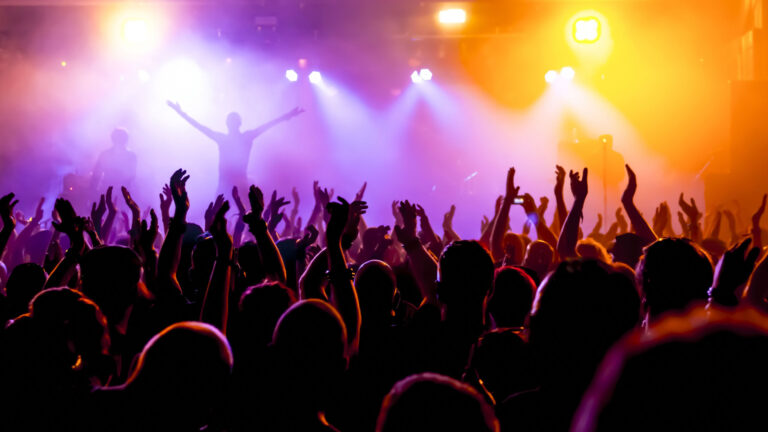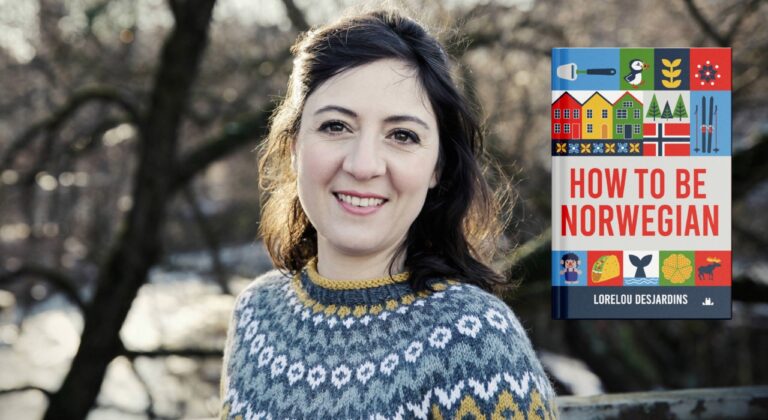A night out in Norway isn’t just about dancing or drinking, it’s a well-rehearsed cultural ritual with a beginning, middle, and end.
This post is an extract from Lorelou Desjardins’ new book, How to be Norwegian. It packs 55 chapters on (almost) everything one needs to know about Norwegians, and will give you some tips on what makes Norwegians tick and how to understand them. The book is available on Amazon and in Norway (Norli and Ark).

This structure isn’t written anywhere, but every Norwegian seems to know it by heart. If you're new to Norway and get invited to a party, consider this your unofficial survival guide.
Act I: ‘Vorspiel'
The evening always begins at someone’s home. This part is called vorspiel, or simply vors. While it borrows its name from the German word for “foreplay,” don’t be misled: in Norway, it’s entirely about alcohol.
Specifically, drinking at home with friends before going out, ideally with alcohol bought from Vinmonopolet (the state-run liquor store) or the duty-free shop at the airport. Or Systembolaget in Sweden after a Harrytur.
The idea is logical enough: alcohol is notoriously expensive in Norway, so people drink heavily at home to avoid spending a fortune at the bar. But here's the paradox: despite this frugal strategy, the evening rarely turns out cheap.
Vors typically involve lots of drinks, snacks, music, and often intense debates about politics, climate change, or who should have won Melodi Grand Prix (Norway’s Eurovision qualifier).
By the time people head out around midnight, they’re already well on their way to being drunk, if not fully there.
Act II: The Main Party
Just before midnight, like clockwork, Norwegians begin lining up outside bars and clubs.
If you walk through the center of any Norwegian city at 11:45 p.m., you’ll witness it: high heels wobbling, puffer jackets over party dresses, and a quiet determination to “make the most of it.” By midnight, the city’s nightlife pulses into gear.

Queues form in front of popular bars (sometimes the one and only in small towns) and even when it’s really cold, women are in light dresses and men in t-shirts. Speaking loudly and making friends with strangers. Enjoy, this friendliness won’t survive the weekend.
This is the “public” portion of the evening, but it’s also where the original money-saving plan falls apart. Once they get in the bar, all cards are open. Now that everyone is already tipsy, they’re much less careful with their spending.
Beers are ordered in rounds, cocktails appear out of nowhere, and someone will inevitably declare that shots are a great idea. Prices? Irrelevant. Bank accounts? Forgotten.
This is the time when people look at each other to plan for the next act, in case you want to find an intimate company for the rest of the night. Because bars close “early” in Norway so planning is key!
Couples in formation stare at each other from each corner of the bar, hoping to meet again outside once the bell for the last drink has rung.
Act III: ‘Nachspiel'
Norwegians are not allowed to party until dawn, at least not in a public place. At 3 a.m. (or earlier, depending on local laws), the music cuts off, the lights switch on, and bartenders start herding everyone out. No exceptions.
But here’s the twist: the night isn’t over.
This is where the nachspiel begins, the mysterious, unplanned after-party. Unlike vors, which is organized and predictable, organised with friends. Nachspiel is spontaneous and full of surprises.
Before that, though, there’s the mandatory greasy food stop. In Norway, this usually means kebab. You’ll see long queues outside late-night kebab shops. It’s delicious, it’s messy, and it might save you from a brutal hangover.
From there, people either catch a taxi (another major expense, especially if someone vomits, since Norwegian taxis charge a clean-up fee) or wander the icy streets getting to the nachspiel.
Nachspiels can be anything and anywhere. Sometimes a friend of a friend offers their apartment for a planned party, they lure you in with beer they stacked for the occasion (because of course since bars are closed and Vinmonopolet closed 12 hours ago, there is no legal alcohol to be bought anywhere).
Sometimes you end up in a tiny student flat with three guitars and zero food. Other times, it’s just you and one other person sharing a pizza and your deepest secrets, knowing you’ll never mention it again.
Other times you end up in someone’s bed, for a one-night-stand you probably won’t remember either.
The night winds down in dimly lit kitchens, with the last beers disappearing and people disappearing with the night buses, or sleeping somewhere on a rug until the first metro runs.
Final Notes (That You Won’t Find in Any Tourist Guide)
1. Nachspiel etiquette is simple: You can leave whenever you want, without explanation. No need to say goodbye or thank the host, ghosting is standard practice.
2. What happens at nachspiel stays at nachspiel. If you partied with someone on Saturday and see them at the office Monday morning? Or slept with a someone you knew? You don’t mention it. At most, you offer a polite nod and pretend you weren’t both in the most intimate conversation (or more) at 4.a.m.
3. Don’t be shocked if no one talks to you at the bar but becomes your best friend at 2:45 a.m. Alcohol works slowly but steadily in Norway, and the nachspiel is where real bonding, or questionable decisions, take place.
This post is an extract from Lorelou Desjardins’ new book, How to be Norwegian. It packs 55 chapters on (almost) everything one needs to know about Norwegians, and will give you some tips on what makes Norwegians tick and how to understand them. The book is available on Amazon and in Norway (Norli and Ark).
So if you're in Norway and someone asks, “Vil du bli med på vors?”, know that you’re not just being invited for a drink. You’re being welcomed into a full theatrical performance, with an unpredictable final act. Skål, and good luck.

